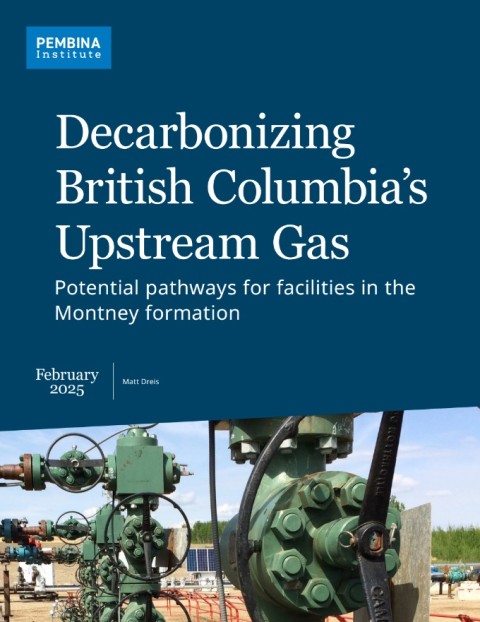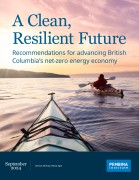This report is a follow-up to our 2023 report, Squaring the Circle, in which we concluded that the scale of proposed liquefied natural gas (LNG) export development in British Columbia would either see the province far exceed its 2030 oil and gas sector emissions reduction targets, or would put significant strain on the province’s supply of clean electricity, due to substantial electrification of both the terminals and upstream gas production.
Since Squaring the Circle was published, LNG development in B.C. has continued apace. In the last few weeks in particular, due to significant trade uncertainty with the United States, all governments across Canada have been seeking opportunities to strengthen their economies and diversify their trading partners, including the B.C. government. As such, further work is urgently needed to consider how the province might reconcile the LNG sector with its emissions targets, in order to achieve sustainable economic growth for British Columbians, now and into the future.
While Squaring the Circle looked at potential pathways for emissions reductions across the upstream, midstream, and the terminals, this report more closely examines the feasibility of emissions reductions in the upstream, considering factors such as geography, maturity of technologies, and existing infrastructure.
We also suggest that upstream oil and gas companies should focus decarbonization efforts on assets that are anticipated to have the longest lifespan and resiliency to the energy transition. In doing so, they can ensure that such investments, which are likely to be funded through a mixture of public and private capital, will realize emissions reductions over the longest possible period. Based on this criterion, the Montney formation is a prime candidate.1
This report examines two decarbonization pathways for emissions reductions from combustion sources in the B.C. Montney: the electrification of industrial facilities, and the large-scale deployment of carbon capture and storage technology (CCS). While methane emissions are a critical part of meeting emission reduction targets, and some of the lowest-cost emissions reductions available for many facilities, they are left out of the scope of this report and should be studied separately once the BC methane regulations are finalized this year.
We separate emissions clusters into two areas and find that the Heritage Montney has favourable existing access to electricity transmission infrastructure, indicating a high potential for electrifying these operations. For the North Montney, we find that its lack of electricity infrastructure, combined with its geographic location overlying saline aquifers with significant storage potential, makes it a better candidate for carbon capture and storage deployment.
Through a combination of CCS and electrification, we conclude that upstream gas emissions could potentially be reduced between 2–3 Mt CO2e per year. To see these pathways to reducing emissions in the B.C. Montney realized, we also recommend areas where further policy certainty is needed.










